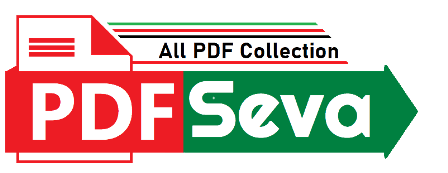
ad here
743 Download
1 year ago
The D And F Block Elements Class 12 Notes PDF Free Download, Students may use the d and f block components IIT JEE notes PDF to do a short review before the test. These notes also allow them to save a significant amount of time shortly before their examinations. In the d and f block components IIT JEE notes PDF, we have incorporated all of the crucial topics. Students should read over the d and f block parts IIT JEE notes PDF to ensure that they do not miss any essential aspects.
The d and f block elements, also known as transition elements, are a significant part of the periodic table. In Class 12 Chemistry, students delve deeper into the properties, characteristics, and reactions of these elements. Here, we’ll explore essential Class 12 notes on the d and f block elements, highlighting their key features and explaining their relevance in the realm of chemistry.
Introduction to the d and f Block Elements:
The d block elements are placed in the middle of the periodic table and consist of groups 3 to 12. They are characterized by the filling of 3d orbitals. On the other hand, the f block elements are placed at the bottom of the periodic table and consist of the lanthanides and actinides, with the f orbitals being filled. These elements often showcase unique properties that distinguish them from the s and p block elements.
Electronic Configuration:
The electronic configuration of these elements is notable for the presence of partially filled d or f orbitals. For example, in the case of transition elements, the general electronic configuration can be written as (n-1)d1-10 ns1-2. For the lanthanides, the general electronic configuration is [Xe] 4f1-14 5d0-1 6s2.
Characteristics of Transition Elements:
Transition elements exhibit various characteristic properties, making them essential in several chemical and industrial processes. Some notable features include:
Lanthanides and Actinides:
The lanthanides and actinides, also known as inner transition elements, have unique properties that set them apart from the rest of the periodic table. Some essential characteristics of these elements are:
Complex Formation and Coordination Compounds:
Transition elements are known for their ability to form complex compounds and coordination complexes. These compounds have profound implications in various fields, including catalysis, bioinorganic chemistry, and industrial processes. The formation of complex compounds is governed by factors such as ligand strength, chelation, and the nature of the central metal ion.
Magnetic Properties:
The presence of unpaired electrons in the d orbitals of transition elements results in their magnetic behavior. Transition metal complexes can exhibit paramagnetic or diamagnetic properties depending on the number of unpaired electrons.
Color and Spectral Properties:
The characteristic colors displayed by transition metal ions are a result of the d-d electronic transitions within their electronic configuration. The absorption and emission of light by these elements provide valuable insights into their electronic structures.
Applications in Daily Life and Industries:
The d and f block elements find extensive applications in various industries and technologies. Some notable applications include:
Coordination Compounds and Biological Systems:
The role of transition elements in biological systems is critical, as they are involved in various physiological processes. Some important biological functions of these elements include oxygen transportation (in the case of hemoglobin), electron transfer (in cytochromes), and enzyme activation.
Key Reactions and Complex Formation:
Understanding the reactions and complex formation of transition elements is crucial in comprehending their behavior in chemical reactions. Some essential reactions include ligand exchange reactions, redox reactions, and complex stability constants.
Conclusion:
Comprehension The Complexities Of Chemical Bonding, Coordination Chemistry, And Industrial Applications Requires A Thorough Comprehension Of The D And F Block Components. These Elements Play An Important Role In Chemistry And Beyond,
Thanks To Their Distinctive Electronic Configurations And Different Functions In Catalysis, Magnetic Characteristics, And Biological Systems. Students May Develop A Complete Grasp Of The Characteristics And Interactions Of These Elements By Understanding Their Relevance In Diverse Sectors, Establishing The Framework For Future Investigation And Application In The World Of Science And Technology.
| PDF Name: | The-D-And-F-Block-Elements-Class-12-Notes |
| Author : | Live Pdf |
| File Size : | 284 kB |
| PDF View : | 86 Total |
| Downloads : | 📥 Free Downloads |
| Details : | Free PDF for Best High Quality The-D-And-F-Block-Elements-Class-12-Notes to Personalize Your Phone. |
| File Info: | This Page PDF Free Download, View, Read Online And Download / Print This File File At PDFSeva.com |
Copyright/DMCA: We DO NOT own any copyrights of this PDF File. This The D And F Block Elements Class 12 Notes PDF Free Download was either uploaded by our users @Live Pdf or it must be readily available on various places on public domains and in fair use format. as FREE download. Use For education proposal. If you want this The D And F Block Elements Class 12 Notes to be removed or if it is copyright infringement, do drop us an email at [email protected] and this will be taken down within 24 hours!
© PDFSeva.com : Official PDF Site : All rights reserved
